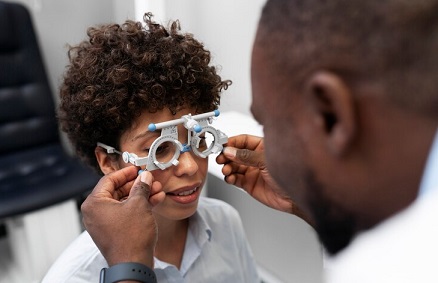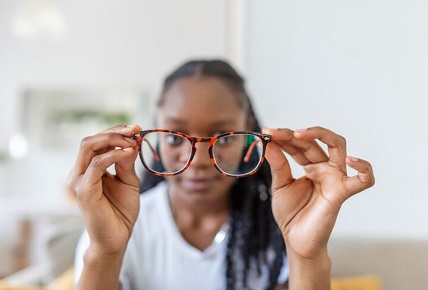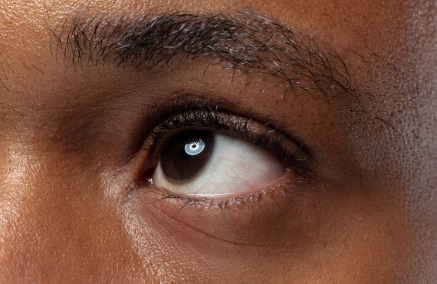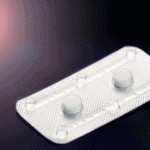
Eye problems are becoming increasingly common these days. While some eye defects are considered minor and don’t last for long, others are major and can possibly lead to a permanent loss of vision.
In a world dominated by screens and constant visual stimuli, the health of our eyes is more crucial than ever. This article delves into the intricate realm of eye defects, ranging from common refractive errors to serious conditions like glaucoma and diabetic retinopathy. Understanding the causes and corrective measures for these defects is paramount for preserving our most cherished sensory organ – the human eye.
Question: What is the most common cause of blindness, and how can it be corrected?
Answer: Cataracts, the prevalent cause of blindness, can be corrected through surgery. This procedure involves removing the clouded eye lens and replacing it with an artificial one, effectively restoring clear vision. Early detection and timely intervention are crucial for preventing total vision loss.
Continue reading to explore 10 eye defects -causes and correction available for preserving and enhancing your vision.

The human eye (our vision) is the most cherished human faculty. If the entire human body costs 1000 naira, the eye alone is 900 naira. Some medical experts consider the eye as an anatomical extension of the brain that serves as a window to the brain and the world we live in. It is a sensory organ that reacts to light, thereby enabling sight.
The eye is quite vulnerable to many defects and conditions, which can lead to severe or mild vision complications. There are minor eye defects that are easily treatable and may resolve on their own. Also, there are severe eye defects and diseases that may eventually lead to blindness.
However, various treatments and corrective methods offer hope for these ocular diseases. This article explores multiple eye defects, causes, and corrections. So, if you’re on the journey of knowing whether or not you have an eye defect or are looking for corrective methods to preserve your sight, this article is for you.

Eye defects or disorders are various conditions that negatively impact the eyes and how they function, leading to vision impairment or discomfort due to a disability of the ciliary muscles. If you cannot see far or near objects clearly and comfortably, you have an eye defect.
When the eye loses its ability to adjust its focal length, it can cause blurriness or distortion, making it really hard to see. Also, when the refractive index encounters irregularities, the clarity and comfort of your vision becomes affected.
Eye defects are common health issues, and some can lead to blindness. We all need to know about eye defects, causes, and correction. Common eye defects, causes, and corrections include;
Refractive errors are the most common ocular problems that cause difficulty with clear vision. They occur when the shape of the eye prevents light from focusing on the retina. Refractive errors include:
Myopia is an eye defect that makes it difficult to see distant objects clearly. However, a person with this defect could still see nearby objects clearly and easily. For example, if you’re shortsighted, reading a text on your phone will be easier than reading the words on the television.
People with myopia have a far point close to infinity; meaning that they can only see distant objects clearly. Myopia occurs when the image of a distant object or the focal point does not form on the retina but in front of it.
Myopia has two leading causes;
Myopia can only be successfully managed or delayed with corrective lenses or refractive surgeries but cannot be cured. To correct this defect, a concave lens of appropriate power is used to adjust the distance of an object nearer to the far point of the eye and bring the image of the object back onto the retina. The concave lens forms the object on the retina by decreasing the converging power of the eye lens. Talk to a Doctor for proper guidance.

Hypermetropia is an ocular condition where the focal point is posterior to the retina. This makes visual acuity better at far distances than at near distances. In other words, Hypermetropia makes it challenging to see close objects or images clearly and distinctly.
A long-sighted person can easily see distant objects but cannot see close objects. For example, reading the words on the TV screen at a fair distance won’t be as difficult as reading the text on your phone up close.
Hypermetropia can be corrected using a convex lens of suitable power to increase the converging power of the eye lens and place the point in front of the retina. It does this by converging light rays to make the final image of an object form on the retina instead of behind it.
Convex eyeglasses have converging lenses that bend the light rays from near objects slightly inward to provide additional focusing power. This brings the image of the object closer to the eye’s near point and on the retina, making nearby objects clearer. Consult a Doctor for more medical advice and proper guidance.

Astigmatism is a vision defect in which the light rays entering the eye focus at multiple points, causing vision to be distorted or blurry. Simply put, astigmatism is when light rays do not enter the retina with a single focus to create a distinct and clear vision. The retina tends to have several focal points in front and behind it.
Astigmatism occurs when the shape of the cornea or retina is asymmetric or uneven. The mismatched curves of the front surface of the eye lens and the cornea’s irregular shape make some images sharper than others.
Talk to a Doctor for proper guidance on what option best suits your condition.
Presbyopia is an age-related defect that typically affects persons around 40 to 50 years old and (due to aging) decreases the eye’s power of accommodation. It is when the eye cannot adjust its focal length, and its near point recedes gradually. People with presbyopia have difficulty reading and seeing close objects clearly and comfortably without corrective lenses.
Presbyopia usually occurs with other eye defects like Hypermetropia, myopia, or astigmatism.
Presbyopia occurs when the ciliary muscles become weak and cannot focus on close objects.
Presbyopia is corrected with bifocal lenses, which have both concave and convex lenses. The concave lens is on top to improve far vision, while the convex lens is below to improve near vision. Talk to a Doctor for proper guidance.
Macular degeneration/ age-related macular degeneration (AMD) is an eye defect associated with aging. AMD damages the macula, the central part of the retina that enables the eye to see details, thus affecting sharp and central vision.
Central vision allows the eye to see distinctly, and when damaged, performing daily tasks becomes challenging. Macular degeneration comes in two forms: wet and dry AMD.
Wet AMD: Wet AMD occurs when abnormal blood vessels behind the retina develop below the macula. This leads to scarring and a leakage of blood and fluid from these blood vessels, which damages central vision rapidly. An early warning sign of wet AMD is when straight lines look wavy.
Dry AMD: Due to aging, the macula gets thinner, and the central vision blurs gradually. Central vision is slowly lost as the macula functions less in the affected eye. Dry AMD affects both eyes and progresses slower than wet AMD.
It is the most common cause of AMD, and its early symptom is drusen, a white or yellow deposit under the retina that is present in persons 60 years old or above. A small drusen is quite normal and harmless; however, a larger drusen increases the risk of wet or dry AMD.
Corrective treatments for AMD depend on which one you have. There are currently no treatments for dry AMD, but there are vision aids that can reduce the damage. These vision aids can’t correct vision loss entirely, but they can improve the vision left and make daily activities easier to perform.
People with wet AMD may need eye injections regularly and occasionally photodynamic therapy to prevent vision loss. Speak with an Eye Professional for personalized medical advice.
Cataracts are the prevalent cause of blindness in the world. It is a vision defect whereby the eye’s lens behind the iris becomes clouded, making it appear opaque. The clouded eye lens causes cloudy or blurry vision and reduces vision to near-complete blindness.
As cataracts advance, the clouding of the lens becomes denser and prevents a sharp and defined image from reaching the retina. Consequently, the image is blurred, and clear vision cannot be achieved.
Cataracts can develop at any age and even at birth for several reasons. Treatment for removing cataracts is available; if left untreated, cataracts can lead to total vision loss.
The typical treatment to correct cataracts is surgery. The surgery is meant to remove cloudy eye lenses and replace them with artificial ones to restore clear vision. Surgery for cataracts is generally safe and effective.
Cataracts can also be treated with special eyeglasses and contact lenses. However, these are not permanent solutions and cannot eradicate the cataract. Talk to a Doctor for proper guidance.
Diabetic retinopathy is a sight-threatening condition associated with diabetes that can cause blindness in diabetic people. Diabetes causes high blood sugar, and over time, the excess sugar in the blood damages blood vessels, including those in the retina.
This damage occurs when the sugar blocks the blood vessels in the retina, causing them to leak or bleed. To compensate, the eye grows new blood vessels, but they are weaker and bleed or leak easily.
Diabetic retinopathy then occurs when there is progressive damage to the blood vessels in the retina due to excess sugar. DR affects both eyes and occurs in four stages;
Although there is no cure for DR, there are effective treatments. Anti-VEGF drugs and corticosteroids can help slow it down, reverse it, and reduce vision loss. Laser treatment shrinks the blood vessels to stop leaking and reduce retinal swelling. Early diagnosis makes DR easier to treat and reduces vision loss. Talk to a Doctor for proper guidance.
This silent thief of sight is a hereditary eye defect and a group of diseases that damages the optic nerve and causes blindness. Glaucoma has two categories: Open angle and closed angle.
Open-angle glaucoma is slow and progresses over a long period. This occurs when resistance builds up in the eye’s drainage canals and is unnoticeable until it becomes very advanced.
Closed-angle or narrow-angle glaucoma is acute and quite painful. It progresses more quickly and causes rapid vision loss. This rare condition occurs when the pupil changes and dilates too quickly, causing the angle between the iris and the cornea to become narrow. Fortunately, the discomfort and pain make people seek medical attention on time before it becomes severe.
Glaucoma occurs when the fluid pressure in the eye is way over the top and builds up in the eye, usually at the front. The pressure rises slowly and damages the optic nerve, affecting how images are transmitted to the brain.
Nevertheless, studies have shown that glaucoma can still occur if the fluid pressure is normal. If glaucoma isn’t detected on time, it can lead to blindness in one or both eyes. Early detection and treatment can prevent vision loss or blindness.
Treatments for glaucoma cannot restore lost vision, but they can slow down the loss of vision. Glaucoma is corrected by reducing the intraocular pressure in the eye. Glaucoma is a lifelong defect, so people with this condition will need daily prescription eye drops for life.
Another corrective treatment is laser treatment to drain the fluid from the eyes. Other correction options include oral medicines, surgery, or a combination of both.
Amblyopia or Lazy eye is a vision impairment whereby one eye has reduced vision than the other because the brain is not working well with the eye. This abnormal visual development occurs early in childhood and is a common cause of vision loss in children and middle-aged adults.
Amblyopia occurs when the nerve pathways between the eye and the brain are not properly stimulated, causing the brain to favor the other eye. Although the affected eye may look normal, it is not used normally. The lazy (or weaker) eye tends to wander inward or outward.
Several conditions, such as myopia, long-sightedness, astigmatism, or strabismus, cause lazy eye. A study found that amblyopia is also caused by congenital cataracts (cloudy eye lens at birth) or a droopy eyelid.
Corrective treatments for amblyopia include:
Strabismus, misaligned eyes, or crossed eyes is a defect in which the positioning of the two eyes is imbalanced. As a result, the eyes don’t line up or align with each other. In other words, the two eyes turn in different directions and focus on different objects. Strabismus can cause the eyes to either cross in (esotropia) or turn out (exotropia).
This condition is prevalent in children and may also occur at birth or shortly after (congenital strabismus). Various underlying medical conditions like stroke or cerebral palsy usually cause strabismus in older children or adults. However, in most cases, the cause of strabismus is unknown.
Strabismus affects the eyes’ ability to focus on the same image, leading to low or absent depth perception. The consequence of this condition is that over time, the brain may ignore the input from one eye, and this can lead to permanent vision loss in that eye.
The eye has six muscles that control its movement, and these muscles work together to point both eyes to look in the same direction. Strabismus occurs when these muscles don’t work together because some of these muscles are weaker. It can also occur due to nerve damage.
As a result, the eyes lose coordination and look in different directions simultaneously. This makes the brain receive different visual inputs from each eye, and over time, the brain will ignore input from the weaker eye.
Strabismus can be corrected with special eyeglasses or corrective lenses, surgery, prisms, or vision therapy. It is best to Talk to a Doctor for proper guidance and treatment options that will work best for you.
The eye is the most precious sensory organ in the human body. There are so many vision problems and eye diseases.
Although some eye defects cannot be cured, many can be treated. Nevertheless, the eyes are very vulnerable to these defects, so regular eye care is paramount.
Fortunately, eye defects can be corrected and managed, and there is still time to take your eye health seriously. You can do your part by committing to a healthy lifestyle and seeing the optometrist or eye care professional regularly.
If you can’t physically make the trip, you can simply Consult an Eye Doctor on KompleteCare for immediate medical attention. Regular eye exams lead to early diagnosis, which is crucial because it can slow the progression of the defect or correct it.
Telemedicine cannot (and should not) replace physical eye examinations entirely. However, it can greatly complement traditional eye care through various ways.
Telemedicine facilitates the treatment of eye defects through teleophthalmology. With teleophthalmology, patients living in remote and underserved areas can get access to specialized expert health care. Telemedicine transcends geographical barriers, and that is its greatest benefit.
Eye defects and visual impairment is a significant health problem worldwide. Over time, telecommunication has evolved exponentially. Things like telescreening and other photographic methods are being used by experts to evaluate and interpret images of the retina for possible eye defects.
Additionally, telemedicine has reduced the burden on healthcare systems. Through online consultations, the waiting time and number of patients in hospitals have reduced for the better. Doctors and patients can easily book appointments online and schedule physical appointments when suitable.
With telemedicine, diagnosing, managing, and preventing vision loss from various eye defects is easier, faster, and innovative.
Common causes of eye defects include genetic/hereditary factors, allergy, age (Age-related macular degeneration), vitamin deficiency, injury, infection, lifestyle choices like smoking, chemical irritants, and disease.
The common eye defects are refractive errors which include myopia or short-sightedness, hypermetropia or long-sightedness, astigmatism, and presbyopia. Other common ones include glaucoma, cataracts, and macular degeneration/age-related macular degeneration (AMD).
The common causes of glaucoma aren’t clear yet. However, many people with glaucoma usually experience high eye pressure. Therefore, treatments for lowering eye pressure can help slow down the progression of the disease. Nevertheless, you can avoid glaucoma by controlling your blood pressure, making healthy lifestyle choices (avoiding smoking), keeping a healthy weight, and being physically active.
Vision correction usually refers to surgery or other treatment procedures that change how light bends as it enters your eye to improve eyesight. Such procedures can treat presbyopia, AMD, nearsightedness, farsightedness, and astigmatism.
The standard or normal vision of a person is referred to as 20/20 vision. It simply means that when you stand 20 feet away from an eye chart, you should see what the normal person sees or clearly identify a row of 9mm letters from 20 feet.
Healthline: https://www.healthline.com › human-body-maps › lens
Sridhar, M. S. (2018). Anatomy of the cornea: https://doi.org/10.4103/ijo.IJO_646_17
Nguyen KH, Patel BC, Tadi P. Anatomy, Head and Neck: Eye Retina: https://www.ncbi.nlm.nih.gov/books/NBK542332/
Nickla, D. L., & Wallman, J. (2010). THE MULTIFUNCTIONAL CHOROID. Progress in Retinal and eye Research, 29(2), 144. https://doi.org/10.1016/j.preteyeres.2009.12.002
Surendran TS, Raman R. (2014) Teleophthalmology in Diabetic Retinopathy.
NutritionFebruary 5, 2025
MedicationFebruary 5, 2025








